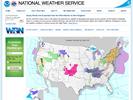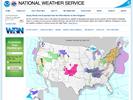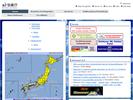A hurricane is a powerful cyclone-that forms over the tropical oceans. Hurricanes occur toward the end of summer, when low-pressure areas form over the Gulf of Mexico and the Caribbean. The low-pressure area causes cool air to move which, in return, causes the air mass to begin spinning. The system begins to spin faster as more air is drawn in. The mixture of rising and spinning air forms a doughnut-shaped wall of strong winds and rain-clouds. A hurricane's winds causes the most destruction.
Hurricanes are found in the tropics during the summer and into autumn. They are most common near a low-lying coast on low latitudes. Also, they are commonly present in the Western Atlantic, North Pacific, and the Western South Pacific Oceans.
- Michelle Rooks
- 231
The abnormal pattern of increase in temperatures down the Peruvian and Ecuadorian coast is called El Nino. It is part of a bigger change in wind and weather all over the world. El Nino and La Nina are essentially the same phenomenon. When unusually cool temperatures in the ocean occur on the equator between South America and the Date Line, La Nina exists. This happens around Christmas time. El Nino is noticed along the South American coast, in the open Pacific Ocean, near the Galapagos, and near the Date Line 4 months after La Nina. The most significant cause of damage during El Nino is a result of the violent storms it brings and the upsets in global food chain that it puts into effect. The significant damage from La Ni?a is the increase Atlantic hurricane activity that it causes.
- Michelle Rooks
- 235








